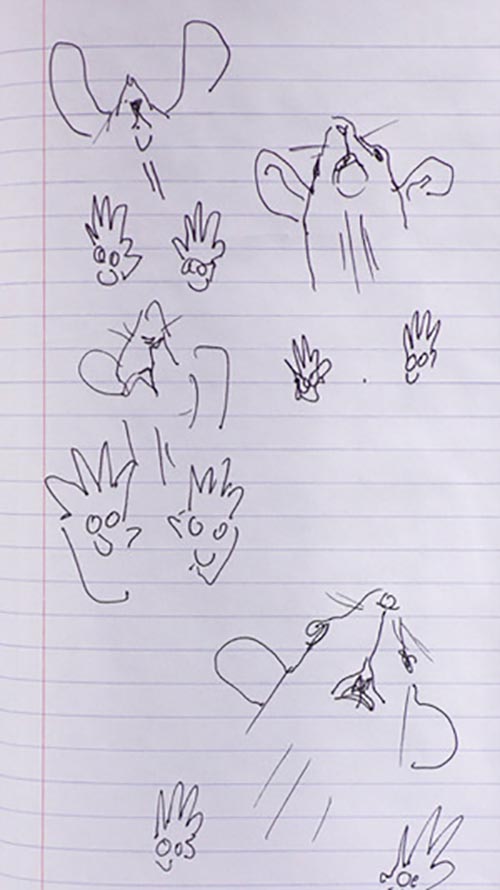
Rat Laughter
2009-2019
An ongoing project, Rat Laughter records lab rats' ultrasonic communications in order to produce "musical soundscapes." A work made to enrich the environment for laboratory rats used in research — developed at SymbioticA.
“Rat Laughter” records ultrasonic rat vocalization in a laboratory setting, capturing contented rat utterances. Then a concert of the “rat laughter” sounds will be created to be played back to the lab rats. This project is based on the human phenomenon of the contagious nature of laughter – hoping that the rats will exhibit a positive response to the other “rat laughter” sounds played for them.
Rat laughter comes in the form of high frequency ∼50 kHz ultrasonic calls, or “chirps,” that are distinct from other vocal emissions in rats. Here’s how Dr. Jaak Panksepp, neuroscientist, Bowling Green University describes his discovery of the phenomenon:
“Having just concluded perhaps the first formal (i.e., well-controlled) ethological analysis of rough-and-tumble play in the human species in the late 1990s, where laughter was an abundant response, I had the “insight” (perhaps delusion) that our 50 kHz chirping response in playing rats might have some ancestral relationship to human laughter. The morning after, I came to the lab and asked my undergraduate assistant at the time to “come tickle some rats with me.” — From Scientific American
Rat Laughter
2009-2019

“Rat Laughter” records ultrasonic rat vocalization in a laboratory setting, capturing contented rat utterances. Then a concert of the “rat laughter” sounds will be created to be played back to the lab rats. This project is based on the human phenomenon of the contagious nature of laughter – hoping that the rats will exhibit a positive response to the other “rat laughter” sounds played for them.
Rat laughter comes in the form of high frequency ∼50 kHz ultrasonic calls, or “chirps,” that are distinct from other vocal emissions in rats. Here’s how Dr. Jaak Panksepp, neuroscientist, Bowling Green University describes his discovery of the phenomenon:
“Having just concluded perhaps the first formal (i.e., well-controlled) ethological analysis of rough-and-tumble play in the human species in the late 1990s, where laughter was an abundant response, I had the “insight” (perhaps delusion) that our 50 kHz chirping response in playing rats might have some ancestral relationship to human laughter. The morning after, I came to the lab and asked my undergraduate assistant at the time to “come tickle some rats with me.” — From Scientific American